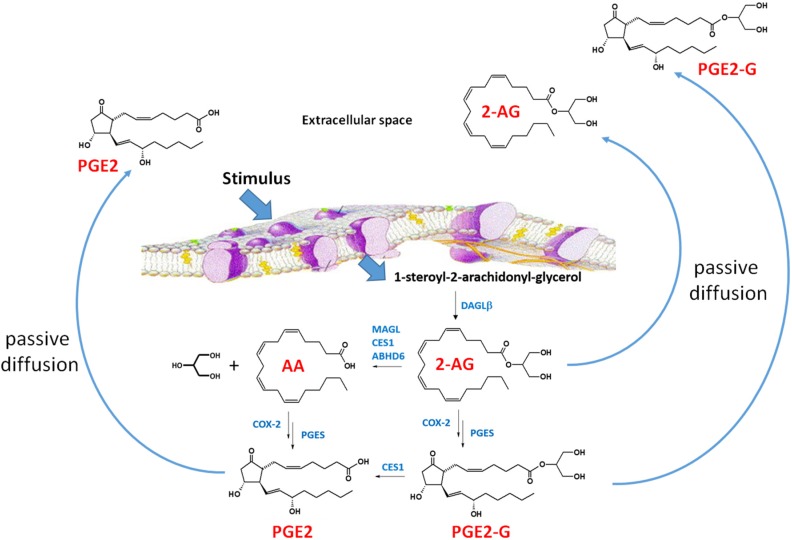Figure 3.
2-Arachidonylglycerol biosynthesis and degradation in macrophages [69]. Following a stimulus, phospholipids are metabolized into 1-steroyl-2-arachidonoyl-glycerol (sn-1,2-DAG) by phospholipase C-beta (PLC-β). The lipophilic sn-1,2-DAG is localized within the lipid membrane and is subsequently metabolized into 2-AG by the enzyme DAGLβ. 2-AG can be degraded by either hydrolytic enzymes (e.g., monoacylglycerol lipase, carboxylesterase 1 (CES1), and (ABHD6) or by oxygenation cyclooxygenase-2 (COX-2)). COX-2 converts arachidonic acid (AA) to PGG2, which is further metabolized to PGH2 (not shown). PGH2 is subsequently converted to prostaglandins, such as PGE2, by specific synthases (shown is prostaglandin E synthase, PGES). Lipoxygenase (LOX) can also metabolize AA to either 12-hydroxyperoxyeicosa-5,8,10,14-tetraenoic acid (12-HPETE) or 12-hydroxyperoxyeicosa-5,8,10,14-tetraenoic acid (15-HPETE) (not shown). 2-AG, PGE2-G, and PGE2 passively diffuse from the cell into the extracellular space where the lipid mediators act in a paracrine or autocrine manner. The lipid mediators have a short half-time due to their rapid degradation [69]. Figure adapted from [70].

